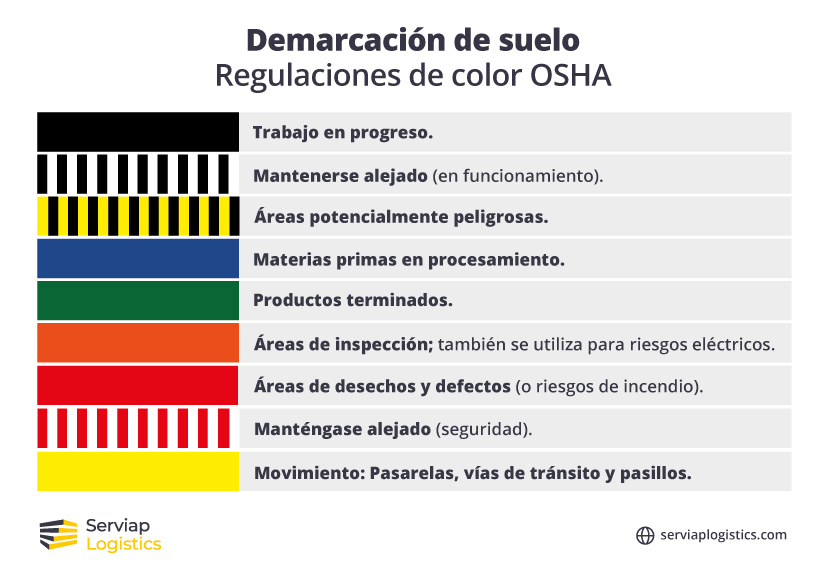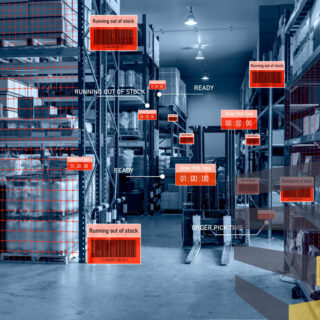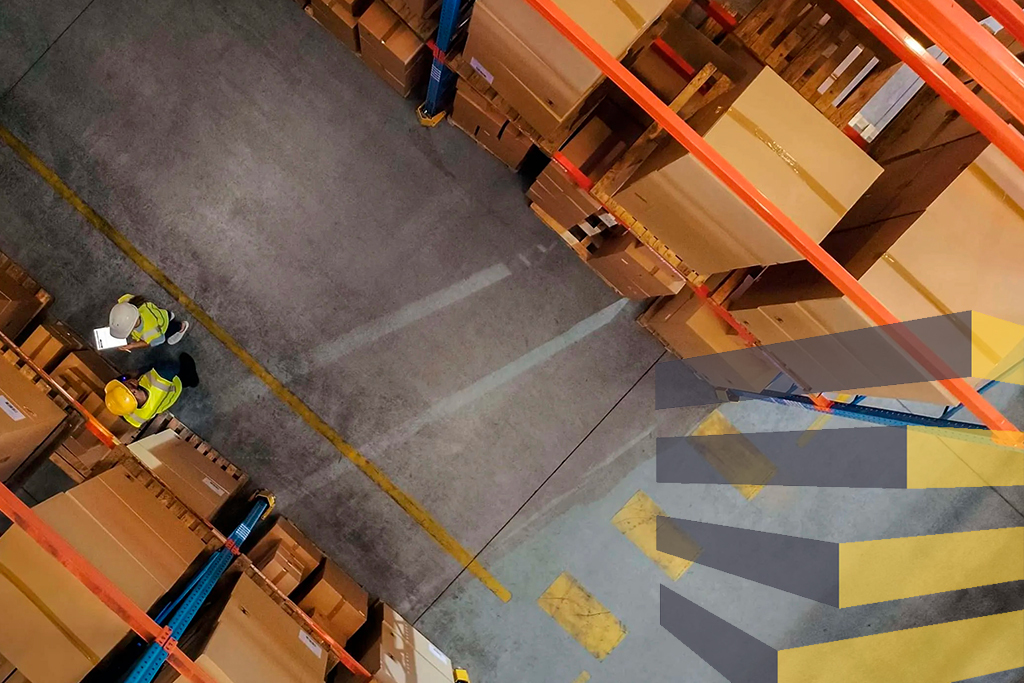Warehouse floor marking is crucial to maintaining safety, good practices and high efficiency in the daily operation of a warehouse or distribution center.
In the United States, warehouse floor marking must be done in accordance with standards set by the Occupational Safety and Health Administration (OSHA), so it is ideal to work with an OSHA-certified supplier.
SEE ALSO: 6 warehouse shelving options to improve efficiency.
There are two main types of warehouse floor marking to choose from when setting up or upgrading facilities: taped and painted, each with its own advantages.
Floor taping is done with adhesive strips made of resistant materials, while the marking of painted warehouse floors is done with high-strength epoxy paint.
If you are located in Brazil, Mexico or the United States, and you need floor marking for warehouses or any other service related to these businesses, please contact us, contact us at.
Floor marking for warehouses: basic concepts
Warehouse floor marking often uses lines or stripes to separate areas within the facility. Along with warehouse signage, it can be critical to maintaining the safety of anyone entering the area.
Although the color will vary depending on the function of the marking, it should be consistent. According to OSHA recommendations, stripes should be between two and six inches wide, with four being the standard for warehouse floor markings in the United States.
These easily visible stripes allow all users of the facility to be aware of how the space is to be organized and utilized. Typical functions of warehouse floor markings include:
- Delimit and mark different work areas
- Providing clear direction for pedestrian traffic
- Reinforcing safety signs
- To make operations more efficient
- More clearly depicting restricted or prohibited areas
Floor marking for warehouses: choice of material
If you are going to mark a warehouse floor, your first decision will be whether you prefer to tape or paint. Note that you can also embed the warehouse floor marking directly into the surface, but this is very unusual as it is a very permanent measure.
Although taping and painting differ in duration, in both cases it is possible to make adjustments and redesigns at a later date. That is much more difficult with marking embedded in the warehouse floor.
There are several factors to consider when choosing the most suitable option, such as the type of flooring and the likelihood of changing markings.
Variables such as durability, strength and cost will influence the decision, and the most suitable warehouse floor marking in one situation may not be suitable in another.
The pros and cons of each type of warehouse floor marking are discussed below:
Marking of warehouse floors with adhesive tape
The most common type of warehouse floor marking is an adhesive tape designed to be placed on the floor. These are usually made of heavy-duty materials such as vinyl.
Pros of the tape
- Fast: can be applied and used immediately
- Flexibility: removes and reapplies relatively easily
- Savings: it is cheaper
Cons of the tape
- Durability: prone to damage, especially in heavily trafficked areas
- Appearance: will fray, fade and discolor over time
- Difficult to clean – may not withstand harsh chemical cleaning
Marking of the warehouse floor with epoxy paint
The most common alternative to tape for marking warehouse floors is long-lasting paint. However, there are some significant differences compared to tape marking.
Painting Pros
- Excellent durability: epoxy paint has high durability and a good finish.
- Resistance: withstands both wear and chemical cleaning
- Customizable: while painting you are in control
Paint cons
- Cost: epoxy paint is more expensive to apply
- Installation time: the floor must be treated prior to application.
- Inflexible: difficult to delete or modify after installation
Colors for marking the warehouse floor

The color of a stripe or box indicates what is occurring or what may be in the area. Color codes can be flexible, although hazards should be marked in red or yellow.
For added emphasis, hazardous areas are often marked with alternating colors.
All employees should be familiar with the color code, and guidelines should be available and clearly signed.
The following colors are standard in most workplaces:
- Black: work in progress
- Black/white: keep clear (in operation)
- Black/yellow: potentially hazardous areas
- Blue: raw materials for processing
- Green: finished products
- Orange: inspection areas; also used for electrical hazards
- Red: areas with scrap and defects; also used for fire hazards
- Red/white: stay away (safety)
- Yellow: for circulation: walkways, traffic lanes and corridors.
Aftercare of floor marking for warehouses
Once the lines have been drawn, it is important to take proper care of them. The main thing is to make employees aware of the importance of taking care of the warehouse floor markings. General recommendations, regardless of the material, include:
- Prevents the wheels of the machinery from running over the lines
- Place mats to keep the soles clean
- Remove objects or debris that could clog surfaces
- Prevents spillage of corrosive materials
- Practice general cleaning
Even warehouse floor markings made of heavy-duty materials can become loose or damaged without good care. The better the care, the lower the need for maintenance in the short and medium term.
Serviap Logistics offers floor marking for warehouses
Serviap Logistics offers warehouse assembly services in Brazil, Mexico and the United States.
These include signage, shelving, labels, floor markings and collision protection. We also offer project management services and can oversee the installation, remodeling or relocation of your warehouse from start to finish.
We count among our satisfied partners some of the world’s largest companies, spanning a wide range of industries, including automotive, e-commerce and wholesale, among others.
As a company that has grown internationally after starting in Mexico, we are committed to excellence and pride ourselves in offering personalized service to each client.
We are also dedicated to maintaining the highest safety standards wherever we operate, including OSHA certification in the United States.
Contact us at for more information on how we can help you mark your warehouse floor. If you were interested in this article on warehouse floor marking, check out the rest of our coverage.








